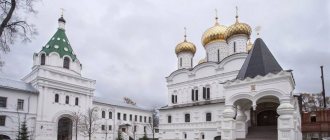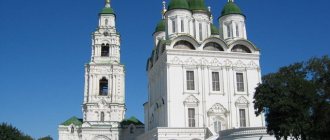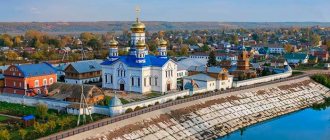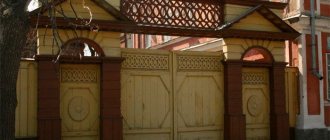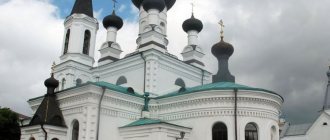Russia \ Astrakhan region \ Attractions
Of course, first of all, the Astrakhan region attracts fishermen with its enormous fishing opportunities. More than 70 species of fish live here, including the famous sturgeon: beluga, sturgeon, sterlet, stellate sturgeon. On the banks of the Volga, Akhtuba and other numerous rivers and channels, many tourist and fishing bases have been built, inviting nonresident guests to the Astrakhan region. Or you can simply set up a tent at any of the picturesque places.
But nature is revealed in all its glory in the Volga delta, in the Astrakhan State Reserve. In addition to the unique landscapes, in the Astrakhan Nature Reserve you can see the most beautiful pink flowers of the nut-bearing lotus - one of the main attractions of the Astrakhan region.
Also, one of the main attractions of the Astrakhan region is the largest salt lake in Russia, Baskunchak, and the highest relief element in the Caspian lowland - Mount Bolshoye Bogdo. These natural objects are under the protection of the Bogdinsko-Baskunchaksky Nature Reserve created in 1997.
Even 40 thousand years ago, ancient people settled the shores of the Lower Volga region and the territory of the Astrakhan region. Polovtsy, Khazars, Scythians, Sarmatians, Golden Horde - many tribes and peoples left their traces on Astrakhan land. The Selitrennoye settlement and the Samosdelka settlement are widely known - archaeological attractions of the Astrakhan region. And after Ivan the Terrible conquered the Astrakhan Khanate, a new page in the chronicle of Astrakhan, as a southern outpost of Russia, was opened in 1558 with the foundation of a wooden fortress on the left bank of the Volga, from which two decades later the outlines of the Astrakhan Kremlin began to grow.
History of the region
Since ancient times, nomads have lived in the steppes of the Lower Volga and Northern Caspian regions. Magnificent pastures and little snowy winters attracted tribes here who were engaged in cattle breeding. In the 8th-10th centuries, the Astrakhan lands were part of a powerful medieval state - the Khazar Khaganate, and later they were taken over by the warlike Polovtsians.
View of the Astrakhan Kremlin
In the middle of the 15th century, the Astrakhan Khanate arose, and the former khan of the Great Horde became its ruler. Local merchants began to trade with the Moscow principality. From the chronicles it is known that under Ivan III, ships with salt regularly sailed from Astrakhan to the north along the Volga.
In 1558, the Astrakhan Khanate was annexed to the Russian state. Its capital was fortified and turned into a reliable outpost that protected the south of Russia from the Turks and Caucasian peoples. Under Peter I, the Astrakhan lands received the status of a province. Saratov, Samara, Simbirsk and some other Russian cities were included in the new region.
Cathedral of St. Vladimir in Astrakhan
Today, almost 1 million people live in the region. It has access to the Caspian Sea, a developed transport network and great opportunities for tourism.
Astrakhan Kremlin and Assumption Cathedral
To view the main architectural creation, you need to set aside a whole day. The Kremlin is located in the island part of the city, washed by the Volga and its tributaries. Built as a defensive structure, it was destroyed by fire after the invasion of Turkish troops. Later, on the site of the burnt fortress, a Kremlin was erected from the stones of the destroyed buildings of the former Golden Horde capital. The structure, surrounded by a 20-meter wall connecting observation towers, lost its defensive function over time. Many buildings located on the territory of the Kremlin have not survived, and the remaining ones have undergone many modernizations.
The pearl of Astrakhan is called a temple built on the territory of the Kremlin . The Assumption Cathedral, 75 meters high, is visible from anywhere in the city. This building impresses with its beauty. Figured domes, white stone pillars and a bell tower add elegance to the temple. The two-story building was originally multi-colored, and today the snow-white walls of the cathedral delight the eyes of local residents and guests.
Cities
Travelers arrive by land and sail on ships along the Volga to Astrakhan
. Now over 520 thousand people live in the regional center, and most Astrakhan enterprises operate.
Swan Lake in Astrakhan
The multicultural and multinational city has preserved many attractions - the white stone Astrakhan Kremlin
, ancient temples, mosques and farmsteads of eastern merchants. There are museums and theaters here. Tourists enjoy walking along the equipped Volga embankment and the former settlement, which is called the “White City”.
Akhtubinsk is a paradise for fishing lovers. The local river is home to bream, pike perch and asp. Tourists come to these places to relax in nature, catch crayfish and enjoy juicy melons and watermelons.
Limansky khurul in the village of Liman
Not far from the city there is a healing lake Baskunchak. Like the Dead Sea, it is considered one of the saltiest bodies of water on the planet. Baskunchak is located on the top of a salt mountain, where the air is saturated with phytoncides and bromine. Everyone who wants to heal bathes in a saturated salt solution - brine, takes mud baths and makes applications with blue-black clay.
The regional center of the Kharabala region, Kharabali, was founded in 1770 and two hundred years later received the status of a city. Travelers enjoy riding camels to the ancient capital of the Golden Horde - Sarai-Batu, admiring the city mosque and going to the Buddhist temple - Khosheutovsky Khural, located in the village of Rechnoye.
Khosheutovsky khurul in the village of Rechnoye
The small town of Narimanov lies on the right, high bank of the Volga, 45 km north of Astrakhan. The main local attraction is the inactive dam or Astrakhan water divider, which is 1.1 km long. There is an interesting local history museum in the city.
The history of the city of Kamyzyak begins in the middle of the 16th century. Notable for tourists are the world's only museum "Russian Watermelon" and the Church of the Smolensk Icon of the Mother of God.
Church of the Smolensk Icon of the Mother of God in the city of Kamyzyak
Where to stay in Astrakhan
Housing offers in Astrakhan are found throughout the city, but the White City - the historical center or areas near it - will be convenient and pleasant for tourists. The neighborhoods within the boundaries of the Volga, the Varvatsia Canal and the Kutum River are home to the Astrakhan Kremlin, the Brotherhood's Garden, many museums and ancient mansions. The best 4 and 5 star hotels in the city are also located here. There are few private offers in the very heart of the city; there is more choice in the rest of the city.
An excellent option for the summer is housing on the banks of the Volga, everyone will notice its wonderful view from the window. In addition to apartments, these include the Azimut and Grand Hotel Astrakhan hotels.
- Astrakhan Hotels
- Hostels for Budget Travelers
- Flats and apartments
- Guest houses in Astrakhan
Before booking your stay on Booking.com, take a look at the page: Cashback promotion for Tourist. RU
Motor ship in front of the Azimut Hotel Photo: © Maksim Starostin
Natural attractions
It is no coincidence that the Astrakhan region is called the “Volga Venice”. The picturesque Volga delta and beautiful landscapes attract up to 2 million travelers to the region every year. Visitors especially enjoy cruise, ecological, horseback riding and fishing and hunting tourism.
Astrakhan floodplains are a favorite vacation spot for fishing fans from all over Russia. Throughout the summer season they catch fish and prepare it in various ways. There are more than 160 fish-breeding areas in the region, which breed fry all year round and plant them in the floodplains so that the number of fish does not decrease.
Lake Baskunchak
The Astrakhan region lies in a desert area where there are small areas of forests. Not every plant can adapt to a hot, arid climate, so the flora of the Caspian region is rather sparse. Low-growing grasses and shrubs are found in open spaces. Sagebrush, sedge, milkweed and desert wheatgrass are thriving.
In the Volga delta, air humidity is higher and there is more vegetation. The channels are inhabited by herring, carp, silver carp, trout, sturgeon, salmon and white fish. Surrounded by ponds, turtles, snakes live, and many species of waterfowl nest.
Lotus fields in the Astrakhan region
Tourists are taken along ecological routes that run along the branches and channels of the Volga to the Astrakhan Biosphere Reserve. A large nature reserve was created in 1919 to protect wetlands. The reserve is home to 72 species of rare birds, white cranes - Siberian cranes - stop by, Egyptian herons, spoonbills, little cormorants and Dalmatian pelicans breed their chicks.
The Astrakhan region is one of three places on the planet where beautiful Caspian lotuses grow in natural conditions. From late July to mid-September, thousands of tourists come to see the large pink flowers.
Vacationers are picked up near the tourist centers and taken to the place of flowering on boats.
Mount Bolshoye Bogdo in the Astrakhan region
Another reserve is located next to the salt lake Baskunchak. In the Bogdinsko-Baskunchaksky Nature Reserve you can see a bulging salt dome - Mount Bolshoye Bogdo (146.9 m), the picturesque Sharbulak tract, karst fields, funnels and caves. Important migrations of migratory birds pass through the territory of the Astrakhan Nature Reserve.
Sturgeon farm and mountain
The sturgeon farm, founded in 2010, is one of 4 large enterprises for breeding sterlet, sturgeon, beluga and bester. Visitors can watch the process of raising sturgeon from eggs to fry.
Guests of the farm have a unique opportunity to get acquainted with the intricacies of black caviar production, look at the conditions of keeping fish in the pools and make a wish by releasing a sturgeon fry into the river. After the excursion, tourists are invited to try delicious fish dishes in a local restaurant and purchase farm products in the store.
Mount Big Bogdo, reaching only 150 meters in height, is a very popular place among tourists, as it is considered sacred among Buddhists. Many legends are associated with it.
Travelers are attracted not only by the picturesque surroundings, but also by the unique “singing” of the mountain. Due to the loose rock, many cracks, niches, depressions and pits formed in it. Due to the blowing wind, a hum can be heard in these holes, reminiscent of singing. People who visit this place in April-May are amazed at how nature manages to paint such a magnificent landscape: blooming tulips and poppies cover the mountain and steppe, turning everything scarlet.
What to see with children
While vacationing in the Astrakhan region, little tourists can have a great time in nature and get acquainted with interesting sights. The most comfortable time to vacation in the Volga Delta with a child is from the end of June to the beginning of September. According to reviews from tourists, Astrakhan tourist centers located on the banks of rivers offer excellent accommodation. Children under 5 years old are usually accommodated for free.
At the Planet amusement park
In Astrakhan, we recommend checking out the Planet amusement park, the Balu gaming complex and the Golden Club water park. In the regional center there is a puppet theater, a circus, a House of Crafts and the Moulage Museum, which is dedicated to frogs and toads.
30 km from the city, in the village of Ivanchug, parents and children are welcomed by the hospitable farm “Baba Frosya”, where African ostriches are bred. There are family houses for tourists, its own restaurant, a summer water area with swimming pools and a zoo.
Slides in the Golden Club water park in Astrakhan
Museums of Astrakhan
The list of Astrakhan attractions to see in 3 days should include several museums. The city has more than a dozen cultural and interactive entertainment institutions, where you can learn more about the history of the Astrakhan land, the culture and way of life of its peoples, and about great personalities who were natives of Astrakhan.
Local Lore Museum of Astrakhan
It is best to get acquainted with the history of the region and its nature at the Astrakhan Museum of Local Lore. Founded in the 19th century, the local history museum has more than 300 thousand exhibits in its collection. One of the most interesting exhibitions of the museum introduces visitors to the animal and aquatic world of the region: stuffed animals of huge fish and steppe animals, dioramas demonstrating the wildlife of the Astrakhan region. You can get acquainted with the treasures of the Astrakhan Khanate at the exhibition “Gold of the Nomads”. Separate exhibitions are dedicated to weapons from different centuries and urban life in the 19th century.
More details: Astrakhan Local Lore Museum
Astrakhan Local Lore Museum Photo: © vladkonst
of the Astrakhan History Museum , located in the former house of Ulyanov-Lenin’s grandfather, introduces the history of the city In the halls of the house-museum, the interiors of pre-revolutionary rooms have been recreated. You can learn about the creative personalities of Astrakhan at the Museum of Culture . You can also learn more about the lives of famous people in the memorial houses of the poet Velimir Khlebnikov and the painter Boris Kustodiev . Their works are exhibited in house-museums - paintings and sketches by Kustodiev, collections of Khlebnikov’s poems published during his lifetime, personal belongings of the creators, archival photographs. The Museum of Military Glory will introduce you to the military history of the city.
Art lovers should visit the art gallery, rich in artistic masterpieces. Dogadina . Paintings by Levitan, Kuindzhi, Tropinin, Shishkin, Malevich and Chagall are exhibited here. In the house-museum of merchant Tetyushinov , located in an openwork wooden tower, the atmosphere of a merchant's mansion is recreated, and at the end of the excursion, guests are invited to a tea party.
House of merchant Tetyushinov Photo: © Vera Polonskaya
You can entertain children by visiting the Astrakhan Planetarium . In addition to observing the starry sky and the movement of the planets in the interactive hall, here you can see an exhibition dedicated to the life of astronauts. The exhibition features spacesuits of astronauts, tubes with their food and other household items. The program for visiting Astrakhan with children also often includes a toy museum with unusual examples of wooden and Soviet toys; sturgeon museum with aquariums. For a country trip with children, you can take a trip to the Baba Frosya Zoo . An open area of 2 hectares is home to large feline predators, steppe animals, ungulates, raccoons, ostriches, and birds of prey. The journey from Astrakhan will take about an hour.
Detailed material: Museums of Astrakhan
Souvenirs
What do tourists from the Astrakhan region bring? Blankets, socks, mittens, medical belts and blankets made from warm and light camel wool are very popular. When leaving home, travelers stock up on pike and sturgeon caviar, dried, dried and smoked fish.
Delicious fish delicacies are sold in markets or in specialized stores.
Those who are not burdened by heavy luggage bring sweet watermelons, melons, apricots and apples from the Astrakhan region. If you don’t want to take perishable souvenirs, you can buy beautiful magnets or mugs with images of watermelons, and also buy jam or candied watermelon rinds.
Exhibits of the Museum of Frogs and Toads "MulyaZh" in Astrakhan
Connoisseurs do not ignore high-quality Astrakhan porcelain - dishes and decorative panels. In the “fish land”, products made from fish skin, elegant “Sarmatian” jewelry and natural cosmetics made from lotus seeds and healing silt mud are popular. Tourists willingly buy bast shoes, tueski, baskets and bread bins woven from lake reeds - chakan.
Soil diversity
The Astrakhan region is characterized by a desert-steppe variant of soil formation. There is not much precipitation here, the air and prevailing winds are dry. To these factors of the natural zone is added the participation in the formation of soil of the waters of the Volga and the Caspian Sea. The territory belongs to the Caspian province. This area is dominated by light chestnut and brown semi-desert soils, saline complexes, sandy massifs and patches of saline marshes. The soil cover is complex.
Big Bogdo
The highest point of the Caspian lowland is Mount B. Bogdo. Its peak is almost 150 m above sea level. The relief is represented by underground and above-ground karst forms. There are grottoes, funnels, beams, caves. Only the latter are about 30. The largest cave is considered to be 1.5 km long. Thanks to an expedition organized in 1854, deposits of sulfur, gypsum, limestone and various clays were found.
Big Bogdo is a mountain that Buddhists worship. Pilgrims come here every year. It is also the only one in Europe where skeletal remains and sedimentary rocks that date back to the first geological period of the Mesozoic era lie directly on the surface. Considering that there are numerous niches, recesses, cornices, and caves on the southwestern slope, a characteristic sound is formed during winds. It was because of him that the locals nicknamed the mountain “Singing Rocks”.
Churches, temples, mosques
What to see in Astrakhan in one day for those who are attracted by churches, churches or mosques? See for yourself!
- Intercession Cathedral – Pokrovskaya Square, 6.
- John the Baptist Monastery - st. Magnitogorskaya, 9.
- Blagoveshchensky Novodevichy Convent - st. Sovetskaya, 29.
- Temple-Cathedral of St. Prince Vladimir - st. General Epishev, 4.
- Kazan Church of the Mother of God - st. Chekhova, 10.
- Temple of St. John Chrysostom – st. Donbasskaya, 61.
- Roman Catholic Church, Church of the Assumption of the Blessed Virgin Mary - the church is not permanently active, but masses and organ music concerts are regularly held here. Address: st. Babushkina, 81.
- Spaso-Preobrazhensky Monastery - after the Trinity Cathedral in the Astrakhan Kremlin, this was the second monastery in the city. Unfortunately, the only thing that remains of its former grandeur is the northeast tower. Address: st. Communist, 11.
- Worship cross Khachkar is an Armenian worship cross and three-arched stele. Address: Park "Armenia".
- The White Mosque is the oldest Muslim mosque in Astrakhan. People of any religion can visit it. Address: st. Zoya Kosmodemyanskaya, 41.
- The Red Mosque is currently the permanent residence of the Mufti of the Astrakhan region. Address: st. Kazanskaya, 62.
- Black Mosque – Address: st. Zoya Kosmodemyanskaya, 48.
Art Gallery named after P. M. Dogadin
This unique ancient building is a merchant mansion, which houses a unique collection of famous avant-garde artists of the late 19th and early 20th centuries. Within the walls of this attraction are paintings by famous Russian artists, classic engravings of the late 18th century, and many exhibits that represent the cultural heritage of the region. The collection of paintings by Kustodiev B.M. is unique, which has become the central and most complete exhibition. Since he was born in Astrakhan and devoted his entire life to his native land, his paintings most fully reflect the identity of those generations. 23 halls and 20 thousand exhibits are the cultural fund of the gallery. A visit to this place in Astrakhan will be very interesting for art lovers.


